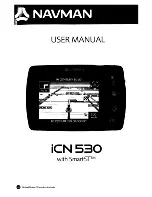
TM106601_(7/01) 2-
9
USE OR DISCLOSURE OF DATA CONTAINED ON THIS PAGE IS SUBJECT TO THE
RESTRICTION ON THE TITLE PAGE OF THIS DOCUMENT
.
C
O M M A N D
S
Y S T E M S
D
I V I S I O N
2.7.1 Visual Inspection Procedure
(1) Manually rotate the antenna in tilt and azimuth axes to verify that no binding action exists, and
that aircraft structure does not interfere with free movement.
(2) Check the waveguide, cable, and black box installation to determine they are mechanically and
electrically secure.
(3) Check for free and proper operation of all indicator controls.
(4) Check that primary power sources are functioning.
2.7.2 Control Panel and MFD Display Check Procedure in Test Mode
After elapse of the turn-on delay, the "RT fault"
indication should not appear on the MFD display
in any mode except test. If "RT fault" appears in
any mode except test (or does not appear in the
test mode), a malfunction exists and corrective
action should be taken.
(1) Rotate the Function Select Switch on the Radar Control Panel to the TEST position. Observe
that RT FAULT appears in the fault field and TEST appears in the mode field on the display(s).
(2) Observe that the complete test pattern appears after approximately 100 seconds from turn on.
Check that the red area in the test pattern is steady. See RDR-1600 Pilot’s Guide for typical test
pattern. The range will automatically set to 80 miles.
(3) Check that the test pattern displays the colored bands in the sequence shown. Width of the bands
is not significant.
(4) Observe that "ripple" moves along the outer band on the display(s), indicating that up dating is
occurring.
(5) Adjust the TILT control on the Radar Control Panel to +5°, then +10°, then +15° checking that
the array plate tilts upward smoothly, and without interference.
(6) Adjust TILT control on the Radar Control Panel to -5°, then -10°, then -15°, checking that the
array plate tilts downward smoothly, and. without interference. Return the TILT control on the
Radar Control Panel to 0° position.
CAUTION
















































